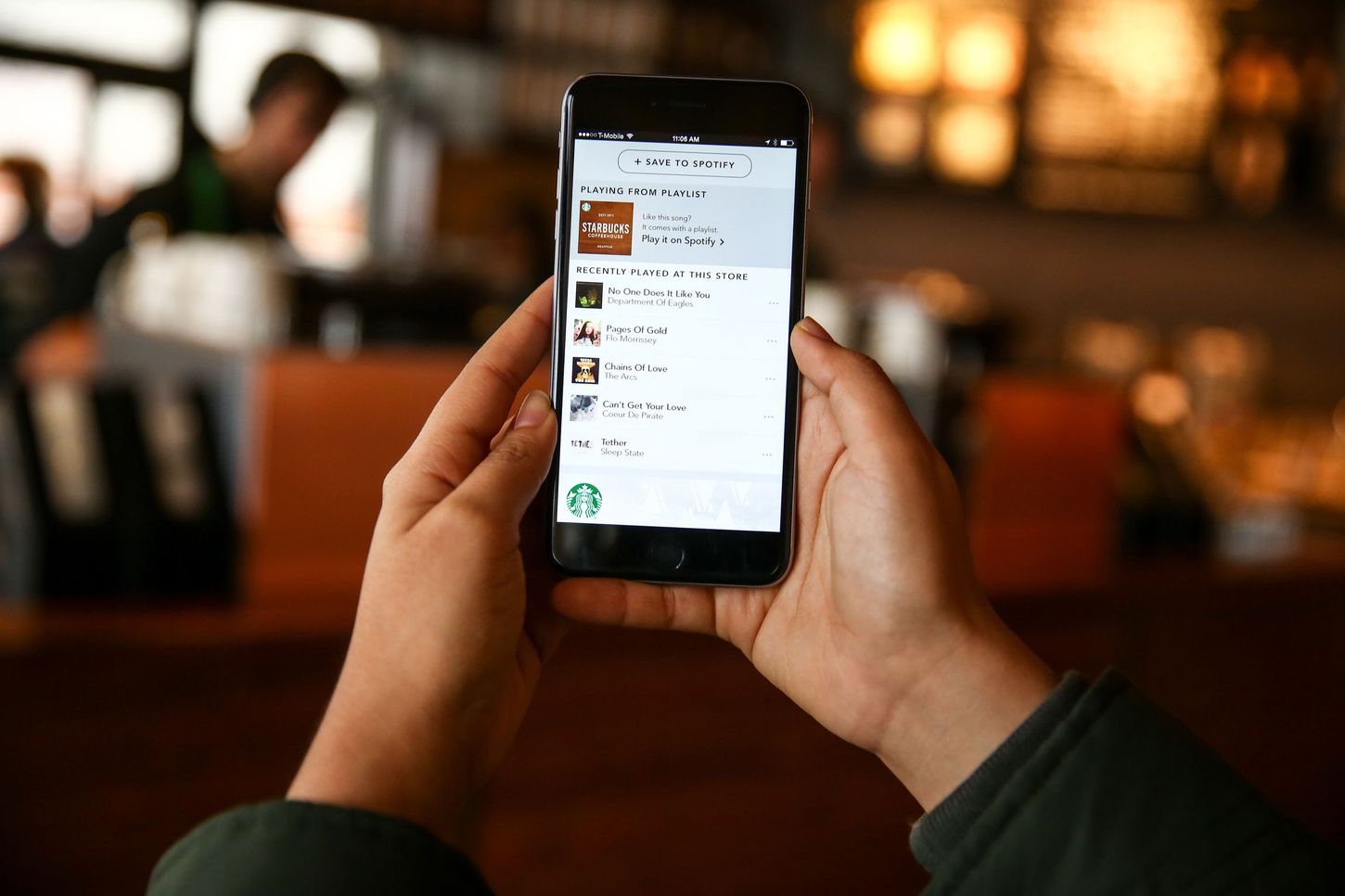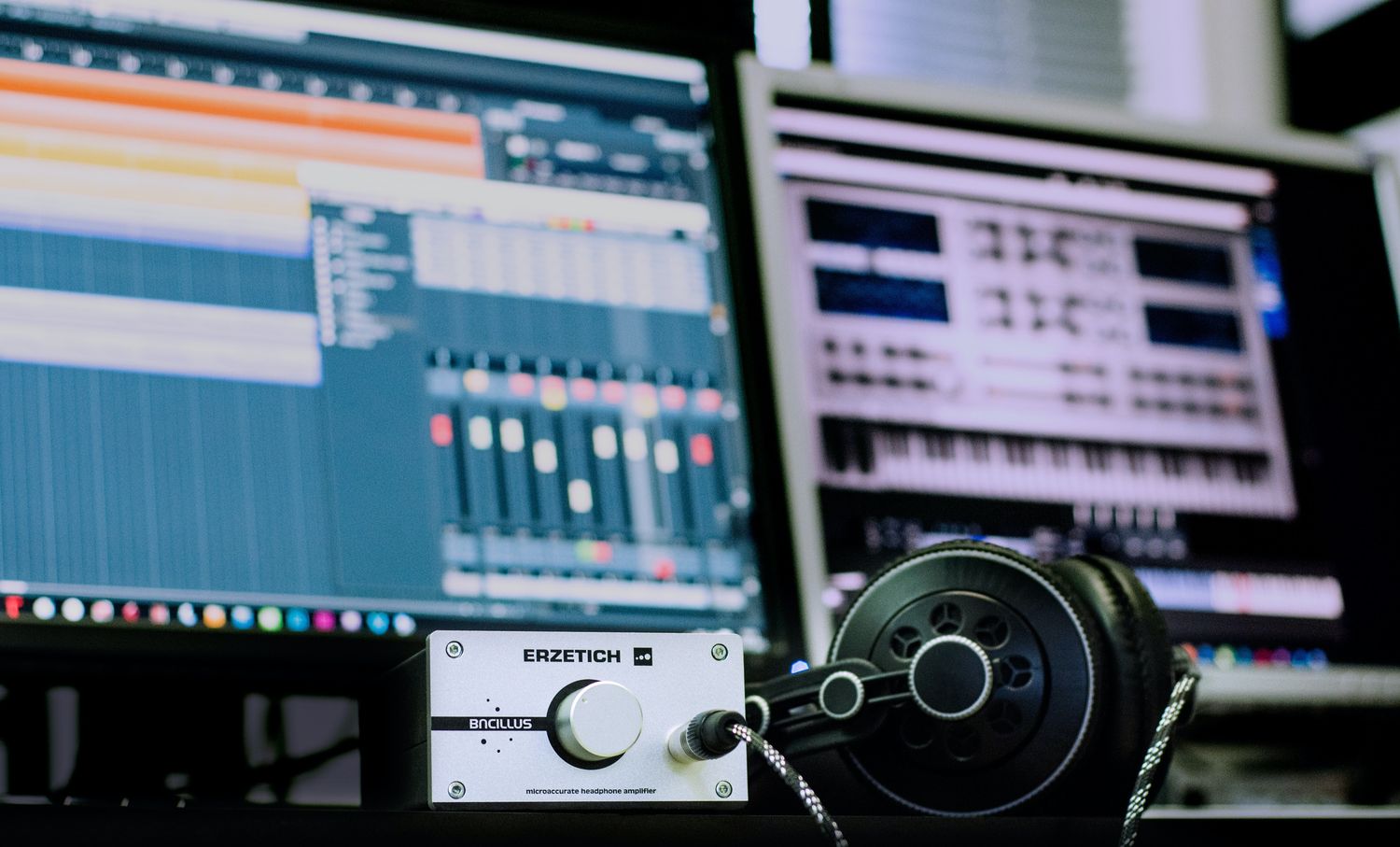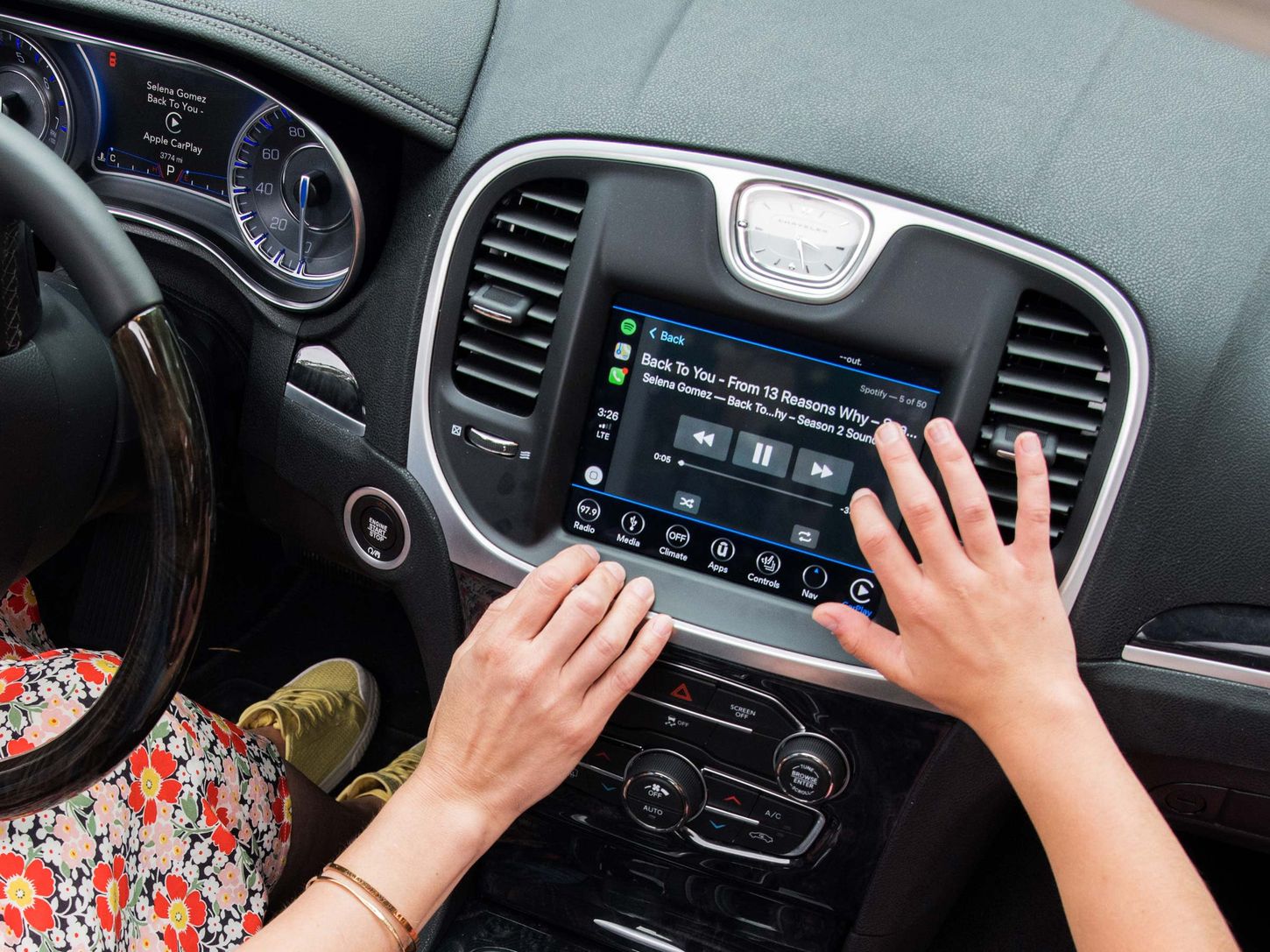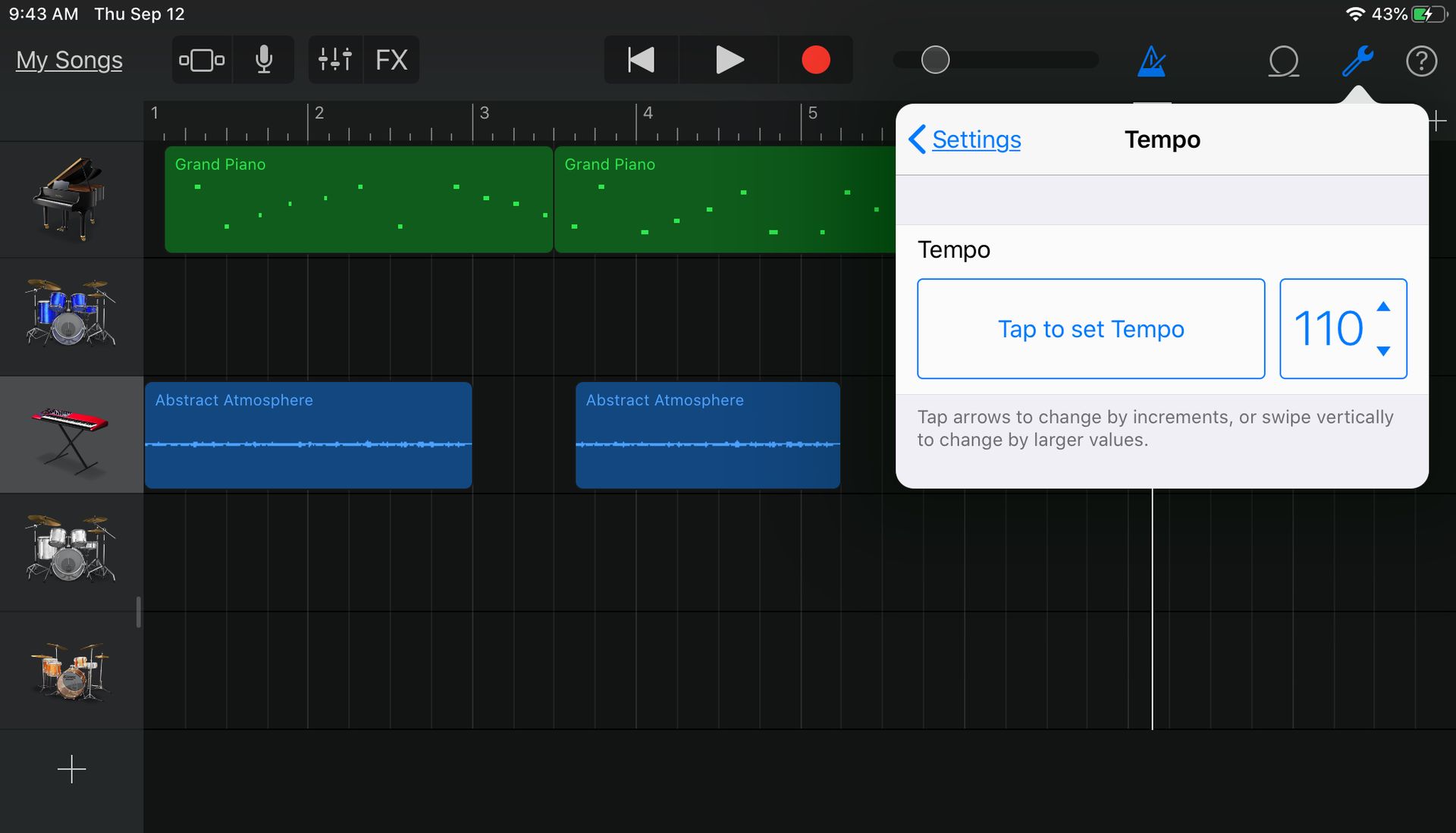Home>Production & Technology>Digital>How Did Digital Music Change The Music Industry


Digital
How Did Digital Music Change The Music Industry
Published: March 10, 2024
Discover how digital music revolutionized the music industry and transformed the way we consume and create music. Explore the impact of digital technology on the music business.
(Many of the links in this article redirect to a specific reviewed product. Your purchase of these products through affiliate links helps to generate commission for AudioLover.com, at no extra cost. Learn more)
Table of Contents
Introduction
The advent of digital music has revolutionized the music industry, reshaping the way music is created, distributed, and consumed. The transition from physical formats, such as vinyl records and CDs, to digital platforms has had a profound impact on every aspect of the music ecosystem. This transformation has not only altered the way artists produce and share their music but has also redefined the relationship between musicians and their audience.
The digital era has ushered in a new wave of possibilities and challenges for the music industry. With the rise of digital music, the landscape of the music business has undergone a seismic shift, prompting industry players to adapt to a rapidly evolving environment. As technology continues to advance, the influence of digital music on the industry is expected to grow even further, presenting both opportunities and obstacles for artists, record labels, and music enthusiasts alike.
The following sections will delve into the multifaceted impact of digital music on the music industry, exploring its effects on distribution, consumption, production, as well as the challenges and opportunities it has brought forth. By examining these key areas, we can gain a comprehensive understanding of how digital music has reshaped the music industry and continues to shape its future.
The Rise of Digital Music
The rise of digital music marks a pivotal moment in the history of the music industry, fundamentally altering the way music is created, distributed, and consumed. This transformative shift can be traced back to the late 1990s and early 2000s when digital technology began to revolutionize the music landscape. The emergence of digital music can be attributed to several key developments, including the proliferation of the internet, the advent of digital audio formats, and the rise of online music platforms.
One of the defining factors in the rise of digital music was the widespread accessibility of the internet. As internet connectivity became more prevalent, it opened up new avenues for music distribution and consumption. This shift allowed music to transcend physical boundaries, enabling artists to reach global audiences with unprecedented ease. Moreover, the internet provided a platform for music enthusiasts to discover and engage with a diverse range of musical content, fostering a vibrant and interconnected global music community.
Simultaneously, the development of digital audio formats, such as MP3, AAC, and WAV, played a crucial role in the proliferation of digital music. These formats offered a convenient and efficient means of storing and transmitting music files, paving the way for the digitalization of music libraries and the emergence of portable digital music players. This newfound portability empowered listeners to carry their entire music collections in their pockets, reshaping the way music was experienced and enjoyed.
The rise of online music platforms further accelerated the digital music revolution, providing users with access to vast libraries of music at their fingertips. Services like iTunes, Spotify, and Pandora transformed the way music was distributed and consumed, offering a convenient and personalized music experience. These platforms not only facilitated the legal distribution of digital music but also revolutionized the way artists connected with their fan base, fostering direct engagement and interaction.
In essence, the rise of digital music represents a paradigm shift in the music industry, ushering in a new era of accessibility, convenience, and connectivity. This transformation has not only democratized music distribution but has also empowered artists and listeners alike, redefining the dynamics of the music ecosystem. As digital music continues to evolve, its impact on the industry is poised to shape the future of music in profound and unprecedented ways.
Impact on Music Distribution
The impact of digital music on music distribution has been nothing short of revolutionary. The traditional model of physical music distribution, characterized by the production and sale of CDs, vinyl records, and cassettes, has undergone a seismic transformation in the digital age. The advent of digital music has fundamentally reshaped the way music is disseminated, offering a myriad of benefits and challenges for artists, record labels, and music enthusiasts.
One of the most significant impacts of digital music on distribution is the democratization of access to music. With the rise of online music platforms and digital storefronts, music distribution has transcended geographical boundaries, enabling artists to reach global audiences with unprecedented ease. This shift has not only empowered independent musicians to share their music on a global scale but has also provided listeners with access to a diverse array of musical content from around the world.
Moreover, digital music distribution has revolutionized the economics of the music industry. The traditional model of physical distribution often posed significant financial barriers for independent artists, requiring upfront investments in manufacturing, packaging, and distribution. In contrast, digital distribution has significantly lowered the barriers to entry, allowing artists to release and distribute their music with minimal overhead costs. This has fostered a more inclusive and diverse music landscape, enabling a wider spectrum of artists to share their creativity and connect with audiences.
Furthermore, digital music distribution has facilitated direct engagement between artists and their fan base. Online platforms and social media channels have provided artists with unprecedented opportunities to interact with their audience, fostering a deeper sense of connection and community. This direct engagement has not only strengthened artist-fan relationships but has also enabled musicians to receive real-time feedback and insights, shaping their creative process and enhancing the overall music experience.
However, the shift to digital music distribution has also presented challenges for the industry, particularly in the realm of revenue generation and piracy. The transition from physical sales to digital downloads and streaming has necessitated new business models and revenue streams, prompting industry players to adapt to evolving consumer behaviors and preferences. Additionally, the proliferation of digital piracy has posed a persistent challenge, impacting the revenue streams of artists and record labels.
In essence, the impact of digital music on distribution has been transformative, reshaping the dynamics of music dissemination and consumption. As the music industry continues to navigate the digital landscape, the evolution of distribution models and technologies will play a pivotal role in shaping the future of music.
Changes in Music Consumption
The advent of digital music has brought about a profound transformation in the way music is consumed, revolutionizing the listening habits and preferences of music enthusiasts worldwide. The shift from physical formats to digital platforms has not only expanded the accessibility and convenience of music consumption but has also redefined the nature of the music listening experience.
One of the most notable changes in music consumption is the transition from ownership to access. In the era of physical music formats, owning a collection of CDs or vinyl records was a hallmark of music enthusiasts. However, the rise of digital music has ushered in the era of music streaming, where listeners have access to vast libraries of music without the need for ownership. Services like Spotify, Apple Music, and Amazon Music have popularized the concept of music access over ownership, offering subscribers unlimited streaming of millions of songs. This shift has fundamentally altered the way people engage with music, emphasizing the value of access and variety over physical ownership.
Moreover, the rise of digital music has facilitated personalized and on-demand music consumption. With the advent of streaming platforms and digital storefronts, listeners have gained the ability to curate their music experience according to their preferences. Personalized playlists, algorithm-driven recommendations, and on-demand streaming have empowered listeners to tailor their music consumption to their mood, activity, or specific musical tastes. This level of personalization has enriched the music listening experience, allowing for a deeper connection with the music and fostering a sense of musical discovery and exploration.
Additionally, the portability and mobility of digital music have redefined the way people integrate music into their daily lives. The emergence of portable digital music players, smartphones, and wireless earbuds has enabled music enthusiasts to carry their entire music libraries wherever they go. This seamless integration of music into everyday activities, such as commuting, exercising, or working, has transformed the role of music in people's lives, becoming an omnipresent companion that enhances various experiences and environments.
Furthermore, the social and communal aspects of music consumption have been amplified in the digital age. Online music platforms and social media have facilitated the sharing and discovery of music among friends, communities, and global audiences. The ability to create and share playlists, engage in collaborative listening experiences, and participate in virtual music communities has fostered a sense of interconnectedness and collective enjoyment of music.
In essence, the changes in music consumption brought about by digital music have redefined the way people engage with and experience music. The shift from ownership to access, the emphasis on personalization, the integration of music into daily life, and the communal aspects of music consumption have collectively shaped a new paradigm of music enjoyment in the digital era. As technology continues to evolve, the landscape of music consumption is poised to undergo further transformation, presenting new opportunities for artists, listeners, and the music industry as a whole.
Effects on Music Production
The impact of digital music on music production has been profound, reshaping the creative process, technical workflows, and artistic possibilities for musicians and producers. The transition from analog to digital technologies has revolutionized every aspect of music production, from composition and recording to mixing, mastering, and distribution.
One of the most significant effects of digital music on production is the democratization of music creation. The accessibility of digital audio workstations (DAWs), virtual instruments, and production software has empowered a new generation of artists and producers to create music with unprecedented ease and affordability. The ability to compose, record, and produce high-quality music from a personal computer has lowered the barriers to entry, enabling a diverse array of voices and genres to flourish in the digital landscape.
Moreover, digital music production has expanded the sonic palette available to musicians, offering a vast array of virtual instruments, synthesizers, and sound libraries. This abundance of creative tools has unlocked new avenues for experimentation and innovation, allowing artists to explore unconventional sounds, textures, and production techniques. The flexibility and versatility of digital production have catalyzed a renaissance of sonic exploration, driving the evolution of musical genres and pushing the boundaries of artistic expression.
Additionally, the collaborative nature of music production has been redefined in the digital age. The ability to collaborate remotely, share project files, and engage in real-time production sessions has transcended geographical limitations, fostering global collaborations and creative exchanges. This interconnectedness has facilitated the emergence of cross-cultural musical collaborations, enabling artists from different corners of the world to co-create and exchange ideas, enriching the global music landscape with diverse influences and perspectives.
Furthermore, digital music production has revolutionized the process of music distribution and promotion. The rise of online platforms, social media, and digital marketing has provided artists with direct channels to share and promote their music, bypassing traditional gatekeepers and intermediaries. This direct-to-audience approach has empowered artists to cultivate their fan base, engage with their audience, and build sustainable careers outside the confines of traditional record labels and distribution channels.
In essence, the effects of digital music on production have redefined the creative landscape, empowering artists, producers, and creators with unprecedented tools, resources, and opportunities. As technology continues to advance, the evolution of digital music production is poised to shape the future of music, driving innovation, creativity, and inclusivity in the ever-evolving musical ecosystem.
Challenges Faced by the Music Industry
The digital revolution in the music industry has brought forth a myriad of challenges that have reshaped the traditional paradigms and business models. One of the foremost challenges faced by the industry is the issue of revenue generation and fair compensation for artists and rights holders. The transition from physical sales to digital downloads and streaming has significantly altered the revenue streams for musicians, often leading to debates surrounding fair compensation and royalty distribution. The rise of digital piracy further exacerbates this challenge, impacting the livelihood of artists and the economic sustainability of the industry.
Moreover, the oversaturation of digital platforms and the democratization of music distribution have given rise to a highly competitive landscape. With an abundance of music readily available to consumers, breaking through the noise and capturing the attention of audiences has become increasingly challenging for artists, particularly independent and emerging musicians. Navigating the complexities of digital marketing, promotion, and audience engagement presents a formidable hurdle for artists seeking to establish their presence in the digital realm.
The evolving nature of consumer behaviors and technological advancements has also posed challenges for the music industry. Adapting to shifting consumer preferences, emerging technologies, and the rapid pace of digital innovation requires industry players to remain agile and responsive. The need to embrace new business models, harness data analytics, and leverage emerging technologies presents a continuous challenge for artists, record labels, and music industry professionals.
Furthermore, the issue of copyright protection and intellectual property rights has become increasingly complex in the digital age. The ease of digital replication and distribution has heightened concerns regarding copyright infringement, unauthorized use of music, and the protection of intellectual property. Safeguarding the rights of creators and ensuring fair compensation in the digital ecosystem remains a persistent challenge that requires ongoing legal, technological, and regulatory efforts.
In addition, the fragmentation of revenue streams and the complexities of music licensing in the digital landscape have presented challenges for artists and rights holders. Navigating the intricacies of licensing agreements, royalty collection, and revenue distribution across various digital platforms and streaming services requires a nuanced understanding of the evolving music business ecosystem.
Addressing these challenges demands collaborative efforts from artists, industry stakeholders, policymakers, and technology innovators to foster a sustainable and equitable digital music landscape. By acknowledging and actively addressing these challenges, the music industry can navigate the digital terrain and harness the opportunities presented by the digital era while safeguarding the rights and livelihoods of creators and contributors.
Opportunities Created by Digital Music
The digital revolution in the music industry has not only presented challenges but has also ushered in a wealth of opportunities that have reshaped the landscape for artists, creators, and industry professionals. One of the most significant opportunities created by digital music is the democratization of access and exposure. Digital platforms and online music services have provided artists, particularly independent and emerging musicians, with unprecedented opportunities to share their music on a global scale. The ability to reach diverse audiences, cultivate fan bases, and engage with listeners directly has empowered artists to establish their presence and build meaningful connections in the digital realm.
Furthermore, the rise of digital music has unlocked new avenues for artistic expression and creativity. The accessibility of digital production tools, virtual instruments, and recording technologies has democratized music creation, allowing artists to explore innovative sounds, experiment with diverse genres, and push the boundaries of traditional music conventions. This democratization of creativity has fostered a rich and diverse musical landscape, enabling a multitude of voices and perspectives to thrive in the digital ecosystem.
Moreover, digital music has revolutionized the relationship between artists and their audience, fostering direct engagement, interaction, and collaboration. Social media, streaming platforms, and online communities have provided artists with channels to connect with their fans, share their creative process, and receive real-time feedback. This direct-to-audience approach has empowered artists to cultivate loyal fan bases, harness the power of crowdfunding and patronage, and build sustainable careers outside the confines of traditional industry structures.
The digital era has also presented opportunities for data-driven insights and analytics, enabling artists and industry professionals to harness the power of data to understand audience behaviors, preferences, and trends. This data-driven approach has facilitated targeted marketing, personalized content recommendations, and strategic decision-making, empowering artists to optimize their reach and impact in the digital landscape.
Additionally, the rise of digital music has expanded the possibilities for collaboration and cross-cultural exchange. Artists from diverse backgrounds and geographical locations can now connect, collaborate, and co-create music in ways that were previously hindered by physical barriers. This interconnectedness has enriched the global music scene with a tapestry of cultural influences, fostering a more inclusive and interconnected musical ecosystem.
In essence, the opportunities created by digital music have redefined the dynamics of the music industry, offering artists, creators, and industry professionals a myriad of avenues for artistic expression, audience engagement, and career development. As the digital landscape continues to evolve, these opportunities will continue to shape the future of music, driving innovation, inclusivity, and creativity in the ever-expanding digital music ecosystem.
Conclusion
The digital revolution has undeniably reshaped the music industry, ushering in a new era of accessibility, creativity, and connectivity. The transformative impact of digital music on distribution, consumption, production, and the overarching music ecosystem has redefined the dynamics of the industry, presenting both challenges and opportunities for artists, record labels, and music enthusiasts.
As the music industry continues to navigate the digital landscape, it is essential to acknowledge the multifaceted nature of the digital transformation. The democratization of music distribution and consumption has empowered artists to reach global audiences, fostering inclusivity and diversity in the musical landscape. However, the industry must address the challenges of revenue generation, piracy, and fair compensation to ensure the sustainability and livelihood of creators.
Moreover, the democratization of music production has unlocked new frontiers for artistic expression, collaboration, and sonic innovation. The digital era has democratized creativity, enabling a diverse array of voices and genres to flourish, while also presenting challenges related to copyright protection and licensing complexities.
Amidst these challenges, the digital landscape has presented a wealth of opportunities for artists, creators, and industry professionals. The direct engagement between artists and their audience, the data-driven insights, and the global connectivity have redefined the relationship between musicians and their fans, fostering a more intimate and interactive music experience.
In conclusion, the digital music revolution has redefined the music industry in profound ways, shaping a dynamic and ever-evolving ecosystem. As technology continues to advance, the industry must adapt to the shifting paradigms, embrace innovation, and collaborate to harness the full potential of the digital era. By navigating the challenges and seizing the opportunities presented by digital music, the industry can pave the way for a vibrant, inclusive, and sustainable future, where creativity thrives, and music resonates across borders and boundaries.











